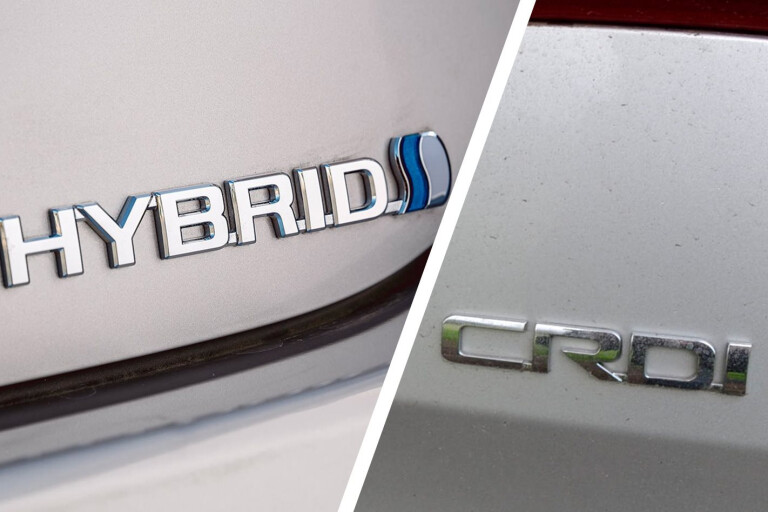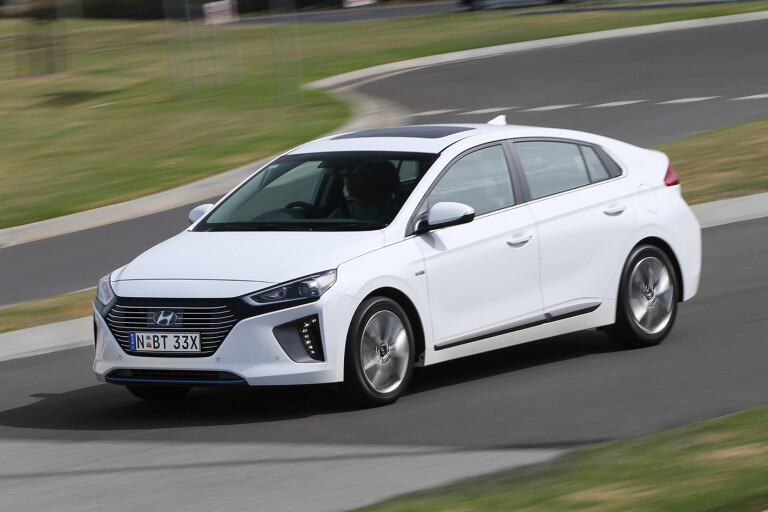
Nowadays with so many engine options available, it’s no wonder so many are left bewildered when faced with a new car purchase.
As more fuel options have entered the market, the choice on which to run long-term has become even more tricky. Today, some of the most common alternatives to petrol engines are hybrid, LPG, diesel and pure-electric. Adding in the fact that each option has numerous pros and cons makes for a confusing buying experience.

For the purpose of this article, the big debate sits between hybrid engines that combine fuel and electric boost, or fuel-sipping diesels.
Let’s take a look at how they compare…
Sales of diesel engines are generally down across the new car market in Australia. Especially considering the huge dual-cab ute market that almost exclusively uses diesel powertrains, diesel passenger cars are becoming rarer and rarer as advancements in petrol efficiency continue and bans on diesels come down across the globe.

However, diesel is particularly fuel-effective for larger SUVs used for towing or longer road trips. On the downside, even filtered diesel creates noxious emissions, and the production of diesel from crude oil creates significantly higher nitrous oxide (NO) emissions than petrol.
In Australia, a hybrid engine means the combination of either electric and petrol engines, or electric and diesel engines.
The hybrid’s electricity can come from a power point (known as a plug-in hybrid), but it can also be made entirely on-board using the conventional combustion engine as a generator. Both types of hybrid also use the braking motion in a car – called regenerative braking – to recharge the battery as you drive. The generated electricity powers the car at low speeds, sometimes assists with acceleration, and runs functions like lights and air conditioning.

The Toyota Prius has been the most popular hybrid in Australia for 14 years, but other manufacturers including Mitsubishi, Mercedes, Honda and Porsche now sell hybrids. When a car becomes available in petrol, diesel and hybrid variants, the diesel is usually several thousand dollars more than the petrol and the hybrid is more again. Maintenance costs for both engine types are also a fraction higher than petrol engines, but the real difference is in the fuel running costs.
Let’s talk average cents per kilometre (c/km) for fuel. The Mazda CX-5 SUV averages 11.39c/km using petrol, yet drops to 9.13c/km using diesel. The petrol Mitsubishi Outlander SUV clocks 11.54c/km, but the plug-in hybrid petrol-electric Outlander averages 6.86c/km. That’s a five-seat, medium-sized SUV chewing less fuel than some smaller cars and even less again if you plug the Outlander into solar panels.
The major downside of diesel fuel is the environmental ramifications. If you want to steer entirely clear of diesel and still enjoy terrific fuel savings then a petrol-electric hybrid does the trick. Unless you’re really into accelerating quickly, it’s probably a better choice overall.
There’s plenty of options out there, you just need to do your research and check the figures. Save the environment, save your pockets or both… either way, hybrids are going to become more and more common in the market so keep a look out.

COMMENTS